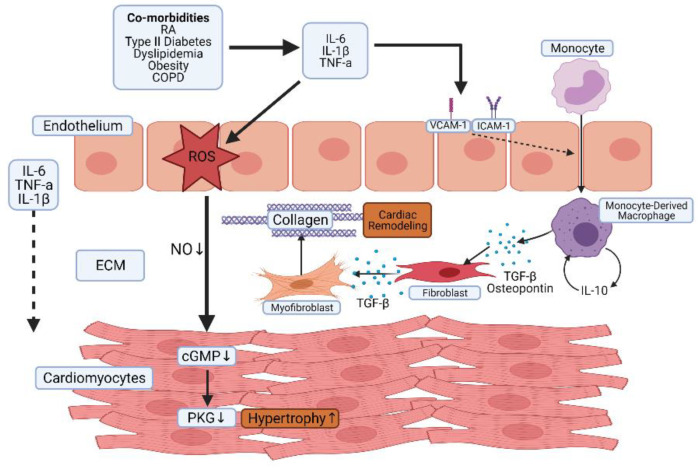Figure 2.
The role of systemic inflammation in the pathogenesis of heart failure (HF) with preserved ejection fraction (HFpEF). Inflammatory pathologies such as RA are associated with increased circulating levels of pro-inflammatory mediators. This results in endothelial activation and dysfunction and increased recruitment of leukocytes, such as monocytes into cardiac tissue. Increased oxidative stress contributes to a reduction in NO bioavailability and a subsequent reduction in cyclic guanosine monophosphate (cGMP) and protein kinase G (PKG) in cardiac muscle leading to cardiac hypertrophy and increased resting tension. MHCII high macrophages produce osteopontin and TGF-β in response to autocrine stimulation by IL-10, which results in fibroblast proliferation and elevated collagen deposition. Ultimately, this results in increased stiffness and diastolic dysfunction.

